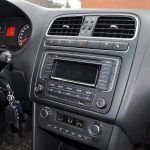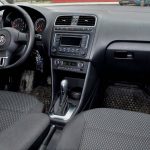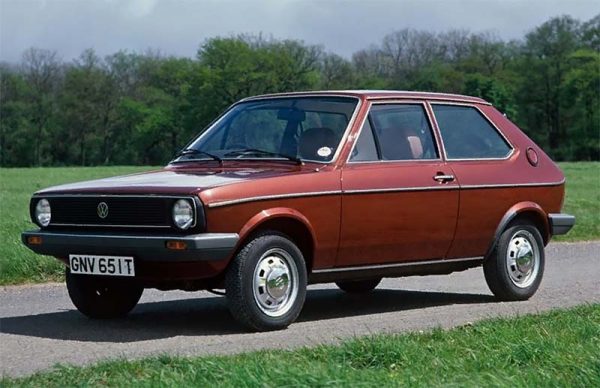
"Volkswagen Polo" - the history of the model and its modifications, test drives and crash test of the car
Content
- Volkswagen Polo I—III generations (1975–2001)
- Volkswagen Polo IV (2001–2009)
- Volkswagen Polo V (2009–2017)
- Volkswagen Polo VI (2017–2018)
- Photo gallery: new Brazilian Volkswagen Polo sedan 2018 - Volkswagen Virtus
- Video: interior and exterior of the new Volkswagen Polo hatchback 2018
- Video: overview of trim levels and engines "Volkswagen Virtus" sedan 2018
- Video: test drive Volkswagen Polo 2018 hatchback around the city and highway
- Video: crash test VW Polo VI 2018
- Video: Volkswagen Polo V 2017 review interior and exterior
- Video: Polo Sedan 110 HP With. after restyling, review and test on the track
- Video: crash test VW Polo fifth generation sedan 2013
- Owner reviews about the Volkswagen Polo car
VW Polo is one of the legendary centenarians on the automotive Olympus. The model has been leading its pedigree since 1976, and this is a long time. Finest hour struck for the Volkswagen Polo in 2010 - the car brand was recognized as the best in the world, the car was also awarded the honorary title of the best on the European continent. What is its history?
Volkswagen Polo I—III generations (1975–2001)
The first cars of this brand left the assembly line in 1975, in the German city of Wolfsburg. At first, a cheap sedan with a liter engine that developed 40 horsepower won the sympathy of motorists. A year later, a luxury modification was released, with a more powerful 1.1 liter, 50 and 60 hp engine. With. It was followed by a two-door sedan, which was called by another name - Derby. In terms of technical equipment, the car is similar to the Polo, only the rear suspension has been strengthened. At the same time, the set of engines was replenished with one more - 1.3 l, 60 horsepower. The cars were so popular that between 1977 and 1981 they were sold by more than half a million motorists.

In the fall of 1981, the new VW Polo II began to be sold. The body of the car was updated, the technical equipment was improved. A 1.3-liter engine with central fuel injection was added to the range of power units, capable of developing power up to 55 hp. With. In 1982, a sports version of the Polo GT was offered to customers, which had a 1.3-liter power unit that developed up to 75 horsepower. The cars were equipped with mechanical gearboxes (MT) with 4 or 5 gears. The front brakes were disc, rear - drum. In the process of development, more and more new versions of diesel and gasoline engines appeared. Sports versions - GT, were equipped with a new 1.3 liter engine equipped with a scroll compressor. This made it possible to raise its power to 115 hp. With. In 1990, modifications of the Polo and Polo Coupe were restyled, and in 1994 the production of the second generation Volkswagen Polo was discontinued.
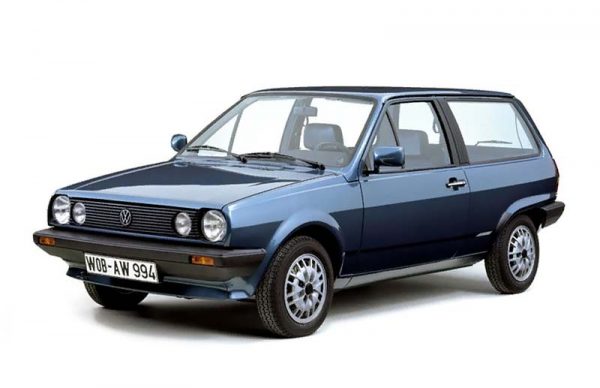
In 1994, motorists were delighted with the new design of the 3rd generation Polo, which still does not look outdated today. The body has increased in size, the interior has become more comfortable. At the same time, the price of the car went up. Cars were still assembled in Germany and Spain. In the design, everything was updated: the body, suspension and powertrains. At the same time, the type of suspension remained the same - MacPherson strut in front, torsion beam in the back. The steering was already equipped with a hydraulic booster, an ABS system was optionally available. A year after the hatchback, a sedan appeared, on which a 1.9 liter diesel was installed. with direct injection, 90 horsepower. The set of engines also included gasoline, 1.6 liters, which developed 75 horsepower.

Since 1997, the third generation has been replenished with a station wagon called the Polo Variant. If you fold the rear seats, the volume of its trunk increased from 390 to 1240 liters. Traditionally, the release of the GTI sports series, so popular with young people, continued. In the second half of 1999, all modifications of the Polo III were restyled, and at the turn of the century, the Volkswagen Polo celebrated its 25th anniversary.
Volkswagen Polo IV (2001–2009)
In the second half of 2001, Polo 4 generations began to roll off the assembly line. The car body has been radically modernized. The focus was on improving the level of security. For this purpose, high-strength steel was selectively used to increase the rigidity of the body. Its panels were still coated with zinc. Despite the fact that the Polo is smaller than the Golf, its interior is roomy and comfortable. Cars were produced with three body styles: a 3- and 5-door hatchback, as well as a 4-door sedan.
In one of the trim levels, a 4-speed automatic transmission (automatic transmission) of the classic type appeared. It was installed in tandem with a 75-horsepower gasoline engine, 1.4 liters. The rest were equipped with a 5-speed manual transmission. The line of diesel and gasoline power units has traditionally assumed a large choice - from 55 to 100 horsepower. The kit included another turbocharged gasoline engine, 1.8 liters, 150 hp. With. All engines met the Euro 4 environmental standard.
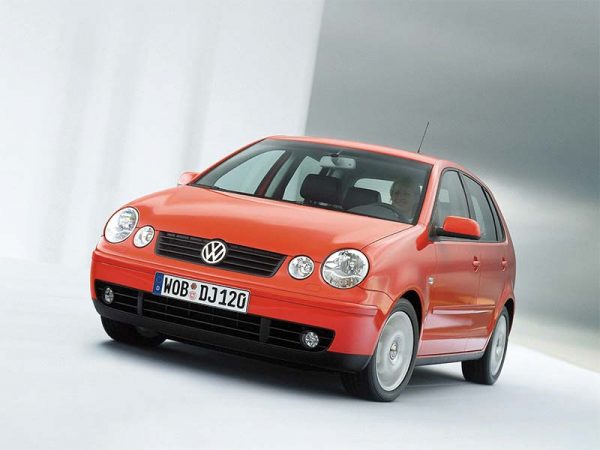
ABS has ceased to be an option and has become a mandatory equipment. An auxiliary emergency braking system has also been added. On most modifications, with engines more powerful than 75 horsepower, ventilated disc brakes are installed on all wheels. Polo experienced another restyling in the first half of 2005. The event was timed to the 30th anniversary of the model. The headlights and taillights have been updated, the radiator has changed its shape. The length of the body has become longer, the rest of the dimensions have not changed. The salon has changed a little - better materials have been used in the decoration. The dashboard has taken on a new look, the steering wheel has also been slightly modernized.
Volkswagen Polo V (2009–2017)
The new VW Polo rolled off the Spanish assembly line in the first half of 2009. The body design has traditionally become more modern. Its dimensions, in length and width, have increased, but the height of the car has decreased. In a number of modifications, a new one has appeared - this is the CrossPolo, with a hatchback body that claims to have increased cross-country ability. The range of engines is traditionally wide. It has atmospheric and turbocharged gasoline engines, as well as turbodiesels. In total, motorists are offered 13 power units of various modifications. Volumes - from 1 to 1.6 liters. Developed capacities - from 60 to 220 horses.
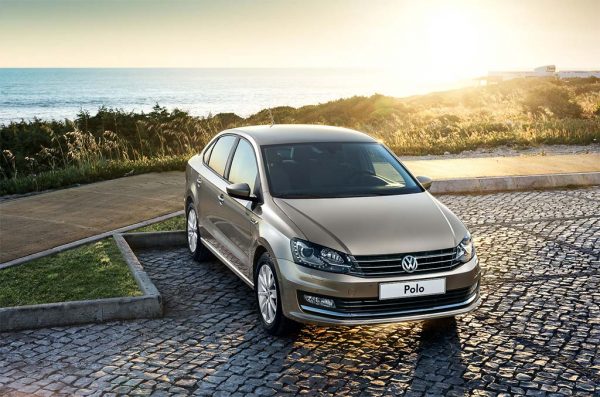
The Kaluga plant produced cars with three gasoline units: 1.2 l (from 60 to 70 hp), 1.4 l (85 hp), turbocharged 1.2 l TSI (105 horses). The cars were equipped with 6-speed manual transmissions or 7-speed automatic preselective transmissions with two dry clutches - DSG. Over the years of sales of the 5th generation, its production has been established in India and South Africa, as well as in Brazil and China.
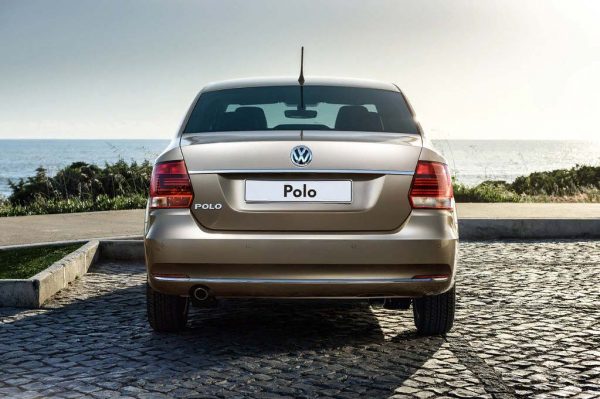
2014 was marked by a restyling of the lineup. Such improvements were made to the steering - instead of a hydraulic booster, an electric power steering was used. The bi-xenon headlights and radiator take on a different shape. Cars began to be equipped with advanced multimedia systems. If we take the general feeling, there were no revolutionary changes. Ground clearance has decreased from 170 to 163 mm. In this direction, production in Europe continued until mid-2017. Then enterprises in Spain and Germany began preparations for the release of the 6th generation of the Volkswagen Polo.
Photo gallery: VW Polo V interior
-

- The engine temperature gauge must be looked for in the Polo V on-board computer menu
-

- To the left of the steering column VW Polo V - controls and headlight settings
-

- The front seats of the Volkswagen Polo are equipped with 3-point seat belts.
-

- Tall people feel comfortable in the rear seats of the Polo V
Volkswagen Polo VI (2017–2018)
The new 6th generation Polo is already conquering Europe, and most recently its release began in Brazil. There it has a different name - Virtus. The car is built on a new modular platform MQB-A 0. The body of the new model has lengthened and expanded, the trunk volume has also become larger, but the ground clearance has become smaller. In the European market, Polo VI is equipped with 1.0 MPI (65 or 75 hp), 1.0 TSI (95 or 115 hp) and 1.5 TSI (150 hp) petrol powertrains, as well as two versions of the 1.6 TDI turbodiesel (80 or 95 hp).
Transmissions are still used the same as in the 5th generation of the brand. This is a 6-speed manual transmission and a 7-speed DSG robot with two clutches. Many new helpers have been added:
- automatic valet;
- emergency braking system that recognizes passengers;
- wireless charging for mobile phones;
- adaptive cruise control;
- blind spot detection system.
Photo gallery: new Brazilian Volkswagen Polo sedan 2018 - Volkswagen Virtus
-

- The chassis of the new VW Polo has been redesigned, although the configuration remains the same
-

- The Virtus stern is inspired by older VW models and sports horizontal taillights instead of vertical ones.
-

- The dashboard is electronic, able to change its appearance
Deliveries of the new hatchback to Russia are not planned. Unfortunately, the date of the transition of the Kaluga plant to the production of the sixth generation Polo sedan is also unknown. In the meantime, motorists should be content with the fifth generation of German state employees. Let's hope this happens in the near future.
Video: interior and exterior of the new Volkswagen Polo hatchback 2018
Video: overview of trim levels and engines "Volkswagen Virtus" sedan 2018


Watch this video on YouTube
Video: test drive Volkswagen Polo 2018 hatchback around the city and highway


Watch this video on YouTube
Video: crash test VW Polo VI 2018
Video: Volkswagen Polo V 2017 review interior and exterior


Watch this video on YouTube
Video: Polo Sedan 110 HP With. after restyling, review and test on the track


Watch this video on YouTube
Video: crash test VW Polo fifth generation sedan 2013


Watch this video on YouTube
Owner reviews about the Volkswagen Polo car
A budget car cannot be liked by everyone - this is quite natural. Therefore, reviews about this car can radically differ - from enthusiastic owners who have this car as their first, to grumblers who are always dissatisfied with something.
Pros: Workhorse. Never failed my Polo. Every time, leaving on a long journey, I knew that this car could not fail! For 3 years of operation never climbed under the hood.
Cons: Car was 2011. Motor fire, but noisy, but chain, consider - eternal. Although there is a second drawback - it's soundproofing.
Pros: handling, reliability, recognition of motorists, adequate consumption.
Cons: weak paintwork, expensive service from an authorized dealer. For 20 thousand kilometers there were no breakdowns.
Pros: high ground clearance. On the Focus in winter, he could easily be left without a front bumper and even in summer he clung to the bottom. Low consumption, when the air conditioner is off and the speed is 90-100 km / h. The average consumption reached 4.7 liters per 100 km. Confidently holds the road, very maneuverable. Plenty of room in the rear passenger seats. I liked the salon, everything is in a classic style. Under the hood is everything in a very accessible place. I'm not picky about soundproofing, it seemed no worse than on the Ford Focus. Very playful, picks up speed well. With a height of 190 cm and a weight of 120 kg, it is comfortable to sit.
Cons: uncomfortable seats, just like it seems that the ass is numb. Small mirrors, caught the “blind zone” several times. At a speed of 110-120 km / h, with a side wind, the car was blown away. Many fall on the rubber. Are factory PIRELLI.
Advantages: good quality, brand, appearance, equipment.
Disadvantages: low-seated rear shock springs, terrible creaking of all doors.
The choice fell on white, with a 1.6 liter engine. Counted on the traction and dynamic characteristics in general. But it turned out to be a bucket of nails, as they say about a poor-quality motor. We drove under our own power from Moscow, once the motor overheated and the fan sensor failed, we had to change the switch itself and the coolant - antifreeze. Pleasure cost another 5 thousand rubles. And this is on a new car. In winter, it starts up problematically - literally for the second season it began to start up not the first time.
Otherwise, it performs well on the track. Overtaking trucks is easy, maneuverability is excellent. Even on ice in winter, with not very good tires rulitsya wonderful. There were various dangerous situations on the highway and on the roads of the city, they got out.
Judging by the reviews of the owners, most of them like the Volkswagen Polo sedan. First of all, the fact that this is a budget car that is available to most Russians. Indeed, few can afford a respectable VW Golf. And this car is great for traveling, family trips to the country and other everyday tasks. Of course, not everything in it is perfect, but more expensive “big brothers” also have drawbacks.


